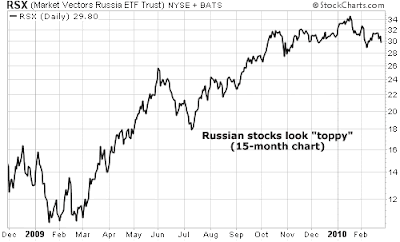We're out of the woods with this financial crisis...
That's my best guess at least, based on a study of the major financial crises through history.
The recent book This Time is Different: Eight Centuries of Financial Folly, by Kenneth Rogoff and Carmen Reinhart, takes a look at the history of major financial crises...
Boiling the book down to its simplest conclusions, here's what happens after a banking crisis:
- Home prices and stock prices collapse dramatically over the course of several years.
- The economy tanks and unemployment rises dramatically.
- Government debts soar.
The book gives specific timelines based on history... It tells us how far things fall and how long these things last. And it gives us a pretty good idea of what to expect going forward.
Let's look at a few of their conclusions more specifically, starting with stocks...
Stock Prices
The authors found that real stock prices typically fall 56% over three and a half years, on average. In the current financial crisis, stocks already fell a bit more than that, in a much shorter period of time, bottoming in March 2009. Then they rallied dramatically.
Is the worst over in stocks? Or is another leg down coming?
I personally believe the worst is over.
At first, the crisis blindsided us, so the effect was dramatic. Now we're aware... more sober... So I think the lows we saw in March 2009 will be the ultimate lows for this crisis in stocks.
Home Prices
The authors found real home prices typically fall 35% over six years. This time around, home prices (like stocks) fell a bit more than the authors' average in a much shorter period of time.
Like stock prices, home prices have been recovering.
Is the worst over? Or did the recent home-buyer tax credit prop prices up?
I think the worst is over. I think we've seen the lows. But home prices may do basically nothing for many years.
Unemployment
According to the authors, unemployment typically rises by seven percentage points in a banking crisis... and unemployment stays "bad" for four years. So far, unemployment has risen by about five percentage points, and we're two years into this thing. So if the authors are right, unemployment could hit 12% and last two more years.
Government Debt
The authors state that government debt explodes by 86% above pre-crisis levels, on average. In the current crisis, quite frankly, I have no idea how much government debt has REALLY exploded. Nobody can know that answer... with all the creative things going on at the Federal Reserve and the Treasury Department.
So where does that leave us?
This crisis has been worse in magnitude than most, according to the authors' numbers. It's also been devastatingly quick.
The good news here is that we may already be out of the woods... Stock prices and home prices have been recovering for months. And unemployment has leveled off in the 10% range.
The bad news is the government's explosion in debts. But risks associated with that won't likely come home to roost in the next couple of years. That's a topic for another day.
In short, based on past crises, it's easy to make an optimistic case that the worst is behind us in the economy.






















